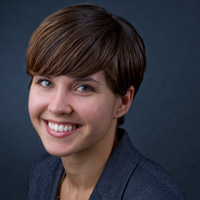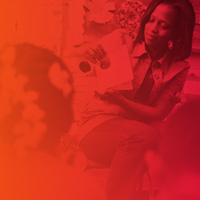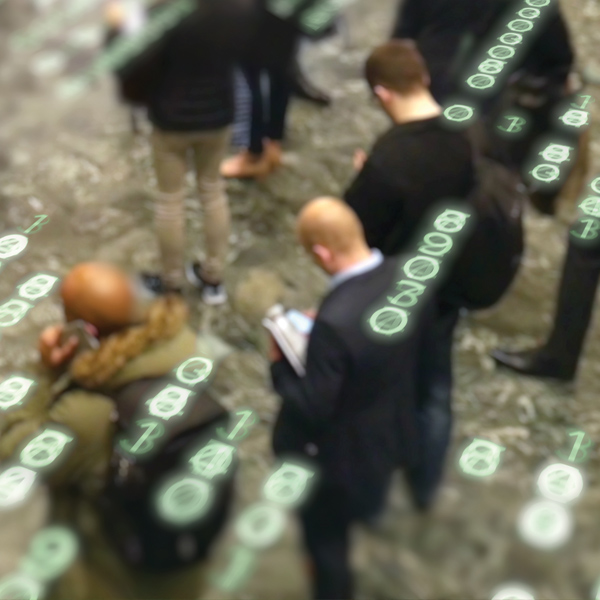
Originally published in the Living Cities blog on April 30, 2012, MacArthur Program Officer for Community & Economic Development Alaina Harkness notes how digital technology can support philanthropy's efforts to connect experts and practitioners.
I think of myself as a technology skeptic. I’m always curious about new gadgets and apps, but I like to give them a serious road test before I invite them into my life, always wary that the time I invest in learning to use the thing will have greater value than whatever I get out of it. Still, technology is tantalizing: even though we know that the vast majority of innovations will alter our lives in incremental ways, it offers up the possibility of transformational change at a societal scale (the events of the Arab Spring the most vivid recent example).
For philanthropists, policymakers, and anyone who thinks deeply about how to make social progress, the challenge of assessing the potential value of new ideas and tools is a familiar one: we are all trying to figure out which new ways of working and living have the most potential to improve the world, so that we can invest our limited resources in them. A skeptical-but-curious person might ask: what is possible—and fundamentally different—because of a new technology that wasn’t before? Why does it matter? What could help technology have greater impact, (as it was nicely framed in this summary) to move beyond “transactional” change? Through its explorations of “civic tech,” Living Cities is beginning to ask these questions with a specific agenda: to better understand the potential of information technology to change the way that cities work, with an important focus on ensuring that these changes benefit their low-income residents.
For me, someone who lives and works in an urban environment and spends lots of time thinking about the ways cities thrive, one of most exciting and “really different” features of new information technologies, specifically social media, is their ability to create, sustain, and connect communities beyond the limits of physical interaction. There’s been a healthy debate about the effects of increased on-line social interactions on our “real-life” community-building efforts (see April’s Atlantic Monthly cover story: Is Facebook Making Us Lonely?), and future research will likely help us understand the impacts more clearly. But on balance, I see these new media channels as a complement to (not a substitute for) the other ways we get information and connect to people on a daily basis.
I still learn what’s happening in my hometown, Chicago, in conversations with my neighbors and other commuters on the train and through the many face-to-face conversations I have with friends and colleagues. I still start and end my day with news from broadcast media: Chicago Public Radio and WTTW, our public television station. While the increased volume and speed of information delivery that social media provides is different, it’s not what really matters – if I’m only following celebrities on Twitter, more and faster delivery of tabloid-quality gossip does not add up to a richer information experience. What has been transformational is being able to make direct connections to experts and their networks—public servants, scholars, nonprofits, advocates, community residents—that might otherwise have been more than a few degrees of separation from me. Why does this matter? Because my job as a foundation program officer is to make and strengthen connections. Through social media, I feel closer to the actions of public leaders, and empowered to engage in a conversation with them. I can more quickly and easily see gaps in information and influence that could be bridged, people and ideas that should be connected; in short, I can do my job more efficiently and effectively.
Today’s “civic technologists”—the programmers, coders, data analysts, and app developers who are motivated to build tools that make city living better—belong to thriving expert communities. This is because they’re adept at using web-based channels to organize, to form and sustain their social and professional networks, and because their passion for innovation fuels connections. Like many thriving professional communities, they are made up of like-minded individuals with similar skill sets, interests, and shared language. If we—the policymakers, practitioners, and funders that want to make cities better places to live for all of their residents—want to harness the talents and energies of these expert communities for social change, we need to find ways to build meaningful, sustained connections between civic-minded technologists and other kinds of experts, some that are recognized as such, and some that might not be so obvious.
Experts and their networks can be issue focused. Are we looking for new ways to use technology to improve employment opportunities and build a stronger talent pipeline in cities? To improve access to health care? Experts on these specific issues can help ensure that tech-enabled solutions are practical, relevant, and informed by existing knowledge about what works (and what doesn’t). Expert communities can also be place- or population-focused, with grounded knowledge about particular regions, neighborhood, or the needs of a specific group of people. Whatever their domain of expertise, the members of these communities speak a common language and have a set of shared references that smooth and speed their interactions with each other, but may make it difficult to create meaningful connections to others. Technologists and community developers (or community residents) may have a strong desire to communicate with each other, but language and skill differences can make it difficult to have meaningful interaction without a great deal of effort. Need proof? Just ask a web developer and a community development corporation director to define “TIF” and compare the answers.
Helping to bridge these gaps of expertise, skill, perspective, and language has been one of the bread-and-butter functions of philanthropy. In the best circumstances, funders connect inspired, socially motivated organizations and individuals to the resources they need to bring their ideas to life. As all funders can attest, it’s a full-time job to make these connections, and not always an easy one. At least one answer to the question, “what could help technology have greater impact?” is this: invest in the brokers and intermediaries that make it their full-time job to play this all-important connecting role. Invest in organizations and individuals that can speak the language of technologists, but have the domain-specific expertise to speak for the issues, places, and people that they aim to serve. Building these connections among and across experts and their networks takes a specialized set of skills. Done well, it requires resources, not just for technology, but to sustain the ongoing, person-to-person relationship building and organizing that technology can help facilitate and accelerate, but will never replace.
Code for America is one intermediary organization that is working hard to formalize these connections across expert communities, in this case between technologists and the municipal governments their Fellows serve. In Chicago, an organization called Smart Chicago is working to create bridges between technologists and multiple experts on particular issues and places that are essential to the vitality of the region. The Chicago office of the Local Initiatives Support Corporation (LISC) is an expert—really a network of experts—on Chicago neighborhoods that, through significant public and private investments in broadband adoption programming, has developed a niche capacity as a very effective translator on technology issues and their relevance to broader community development goals. Living Cities itself is another intermediary that has the potential to do this important framing and translation work, ensuring that these diverse networks of expertise and experience are connected, aligned, and working effectively to implement a shared vision of social change. Funders, both public and private, should do what they can to support these intermediaries—whether they are organizations or individuals—that create the productive spaces where technologists and other kinds of experts can meet, and speak to each other clearly. This won’t guarantee that every tech-enabled innovation is a transformational one, but it should help to filter out the ones that feel too “tech down,” and to ensure that the solutions we’re creating with new tools and technologies will have relevance for the people that need them the most.




